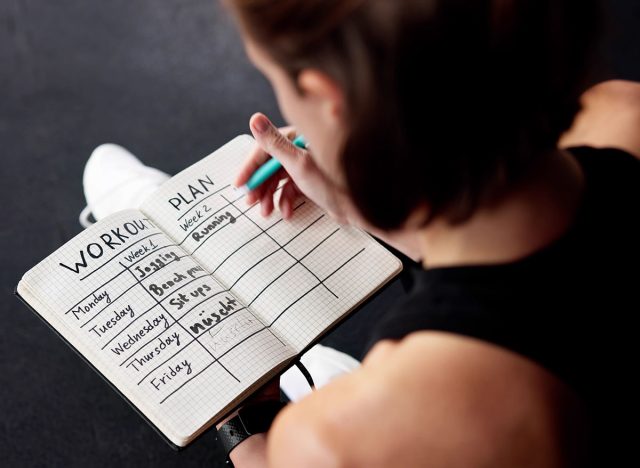6 Best Standing Exercises for Toning Arms After 50

If you’ve noticed your arms looking a little softer than they used to, you’re not alone. After 50, toning your arms becomes genuinely harder—muscle mass naturally declines, hormones shift, your metabolism slows down, and your joints might not move quite like they once did. Recovery takes longer too. But here’s the good news: with the right approach to resistance training and consistency, you can absolutely rebuild and define your upper-arm muscle tone. These six standing exercises recruit more than just your arms—they engage your core, improve balance, and train your body for real-world strength. Read on to discover the most effective standing moves for toning your arms after 50.
Why Standing Exercises Work Better for Your Arms After 50

Standing arm exercises engage more than just the arms, they recruit your core and glutes as well. Here’s what makes them valuable after 50:
Improved balance and coordination: Standing challenges proprioception, helping maintain balance skills that decline with age.
Better calorie burn: Standing activates larger muscles (legs, core), increasing total energy expenditure.
Posture support: Standing strengthens the muscles that counteract age-related slouching and rounded shoulders.
Functional movement training: Daily tasks like lifting groceries, going to the bathroom alone, or reaching overhead all happen standing, so training that way improves real-world strength.
Standing Bicep Curl
Targets: Biceps brachii, brachialis, forearms
How to Do It:
- Stand tall with feet hip-width apart, core engaged, arms at your sides holding dumbbells
- Exhale as you curl the weights toward your shoulders, keeping elbows tucked in to your side
- Slowly lower with control
Avoid These Mistakes:
- Don’t swing your arms or use momentum
- Don’t let your elbows drift forward
- Don’t rush the lowering phase
Standing Overhead Press
Targets: Deltoids, triceps, upper traps, core
How to Do It:
- Hold dumbbells at shoulder height, palms forward
- Brace your core and press weights overhead until arms are straight (don’t touch the dumbbells together at the top)
- Lower slowly to start position
Avoid These Mistakes:
- Don’t arch your lower back
- Don’t shrug your shoulders up
- Don’t lock out your elbows harshly (where dumbbells usually touch)
Standing Lateral Raise
Targets: Middle deltoids (shoulders), upper traps
How to Do It:
- Stand with a dumbbell in each hand, arms slightly bent
- Raise arms out to the sides to shoulder height
- Pause, then lower slowly
Avoid These Mistakes:
- Don’t lift too heavy (this causes shoulder strain)
- Don’t use momentum or jerking motions
- Don’t raise your arms above shoulder level
Standing Triceps Kickback
Targets: Triceps (back of arms)
How to Do It:
- Hinge forward slightly at the hips, knees soft
- Hold weights, elbows bent at 90° by your sides
- Extend arms straight back until fully extended, then return
Avoid These Mistakes:
- Don’t swing your arms
- Don’t drop your elbows
- Don’t round your spine instead of hinging
Standing Front Punches with Dumbbells
Targets: Deltoids, triceps, chest, and core
How to Do It:
- Hold light dumbbells at chest height, elbows bent
- Punch one arm forward while rotating slightly through your torso
- Return and switch sides
Avoid These Mistakes:
- Don’t use weights that are too heavy (this can strain your shoulders)
- Don’t over-rotate your spine
- Don’t drop your core engagement
Standing Arm Circles
Targets: Shoulders, biceps, triceps, and scapular stabilizers
How to Do It:
- Extend arms out to the sides at shoulder height
- Make small, controlled circles forward for 30 seconds, then backward
- Keep posture upright and core tight
Avoid These Mistakes:
- Don’t drop your arms too low
- Don’t move too fast
- Don’t tense your neck
How Often You Should Do These Exercises

Frequency: 2-3 times per week on non-consecutive days
Sets & Reps: 2-3 sets of 10-15 reps for each movement
Progression: When it feels easy, increase weight slightly or add a third set
Duration: A complete standing arm-toning session takes 20-25 minutes
For best results, pair with light cardio (walking, cycling, or swimming) and daily mobility or stretching to maintain joint range.
When You’ll Start Seeing Results

2-4 weeks: Notice improved muscle endurance and less flabbiness sensation.
6-8 weeks: Visible muscle tone and firmness, especially when combined with overall body strength and moderate calorie balance.
12+ weeks: Clearer definition and strength improvements in daily activities.
Realistic expectation: Everyone is different, and you’ll see tone and strength before dramatic visual changes. For adults over 50, the goal is sustainable muscle tone, strength, and function, not extreme bulk.